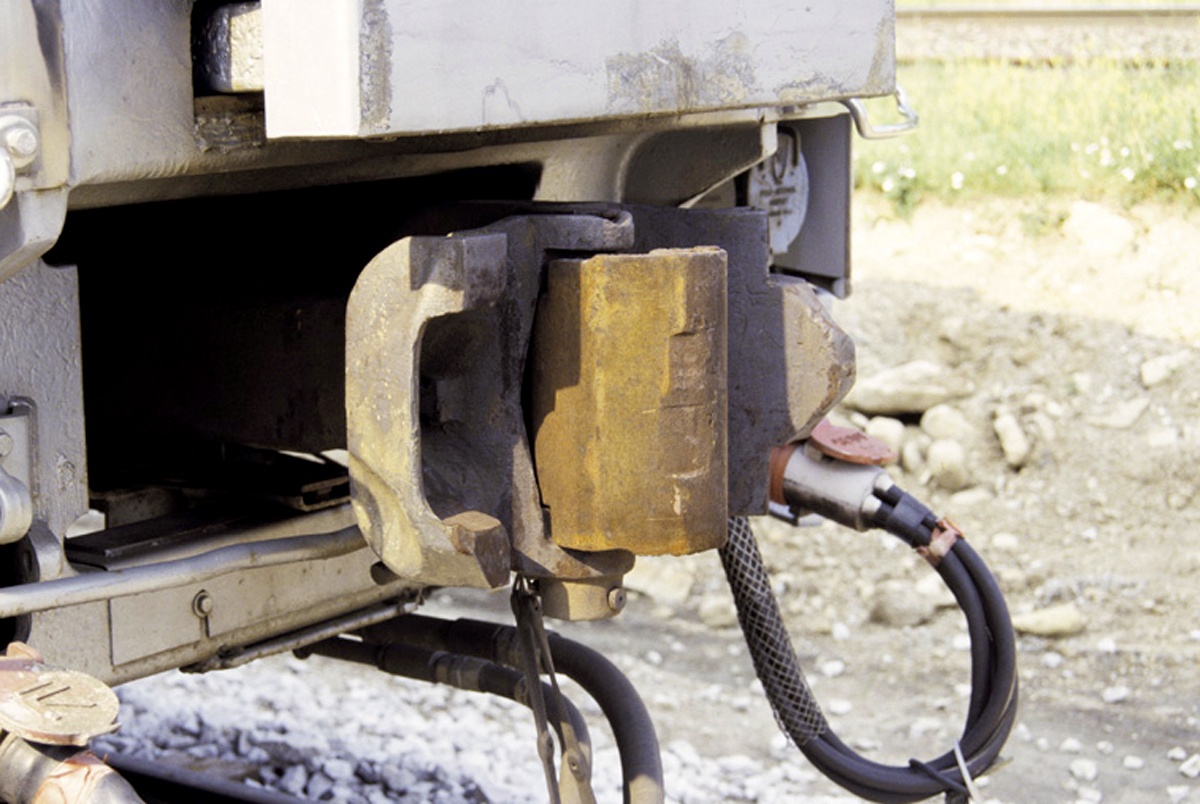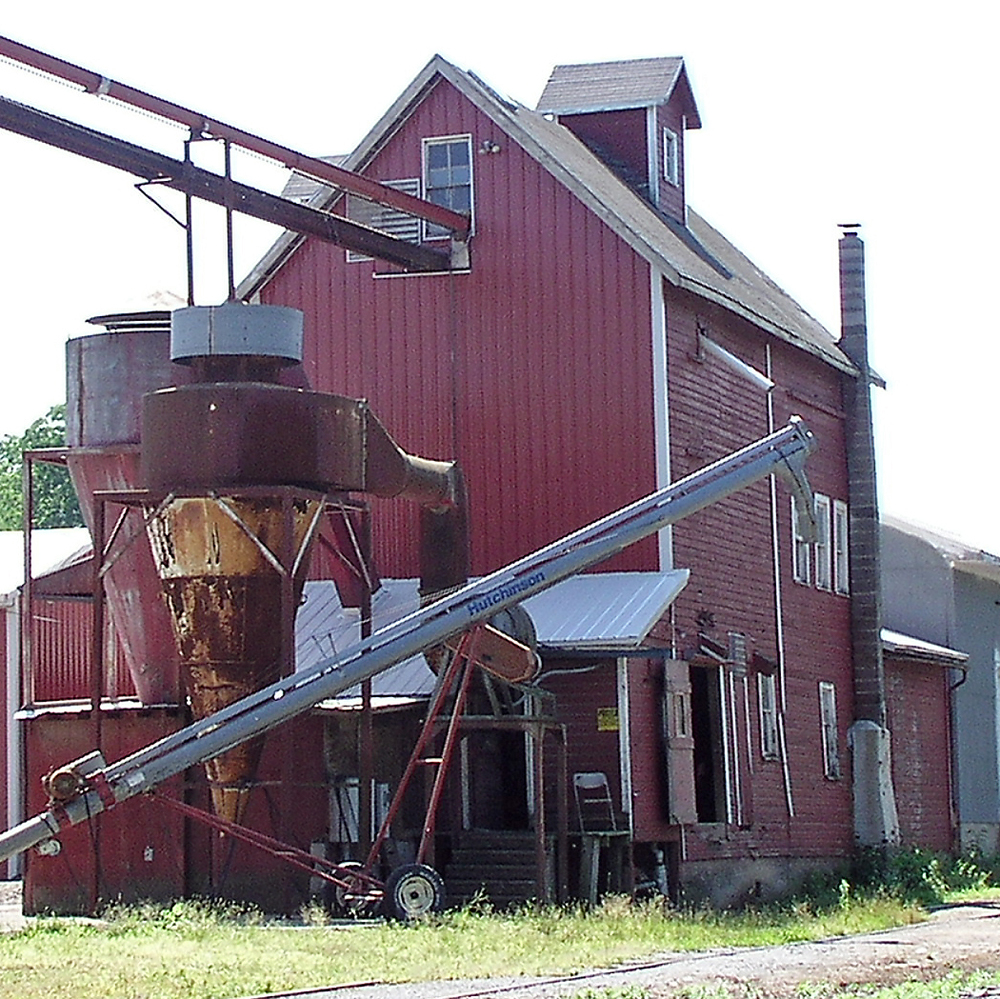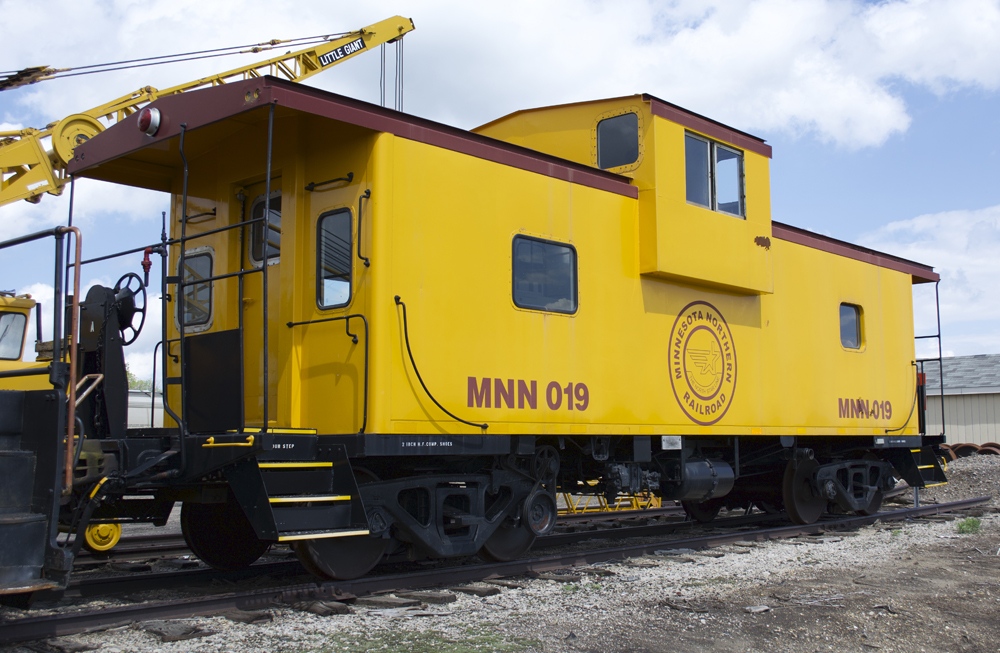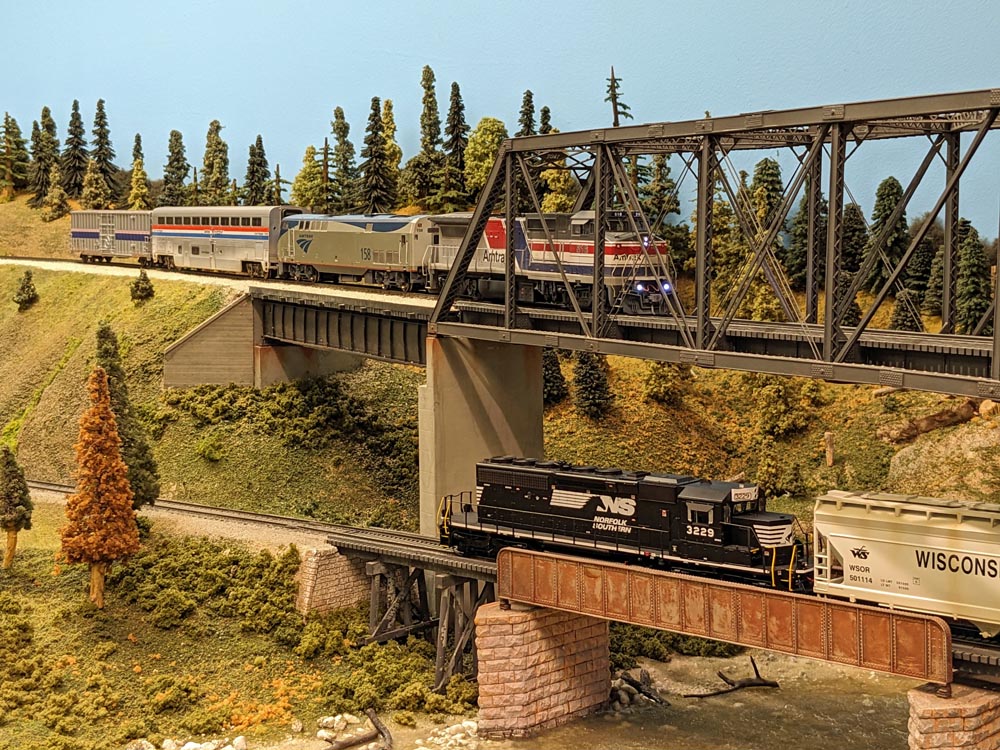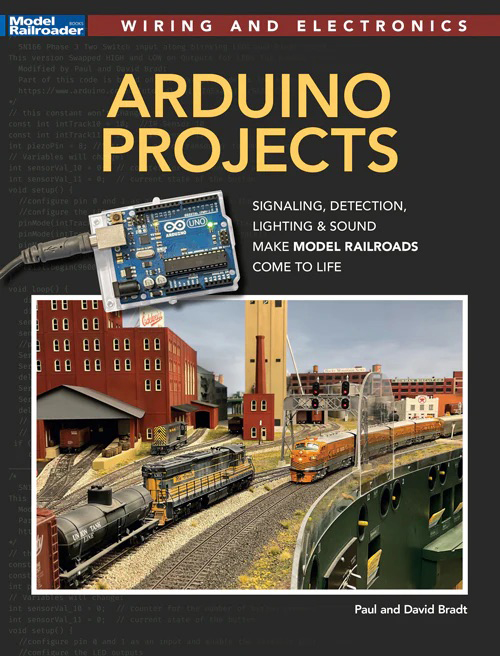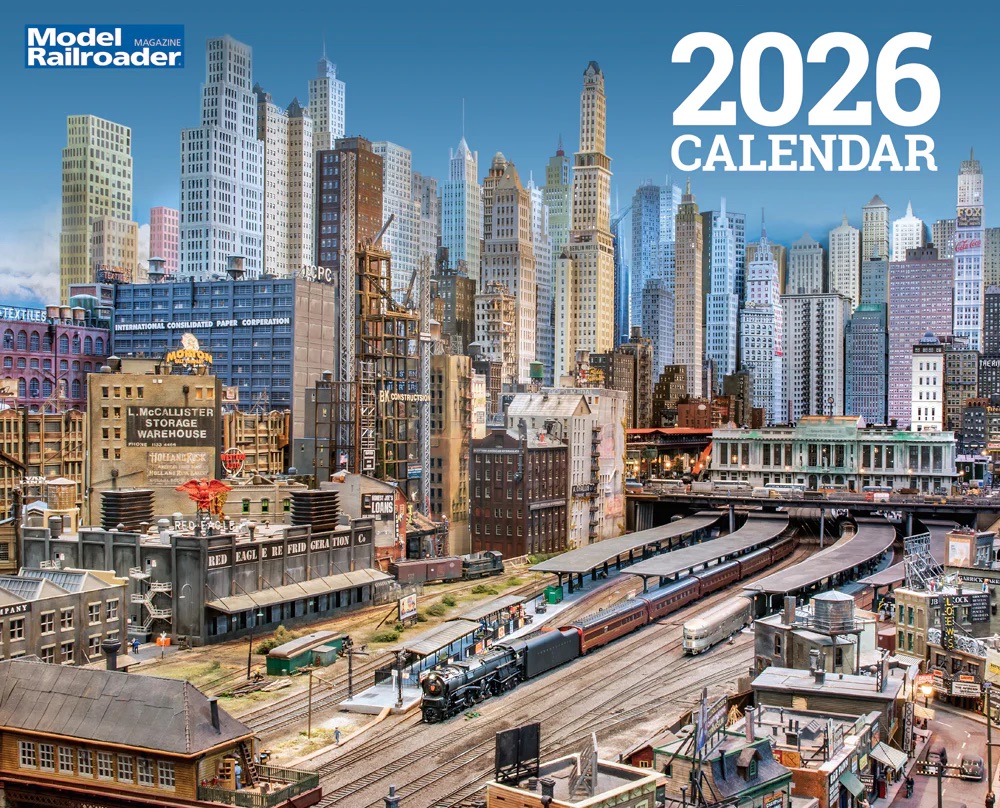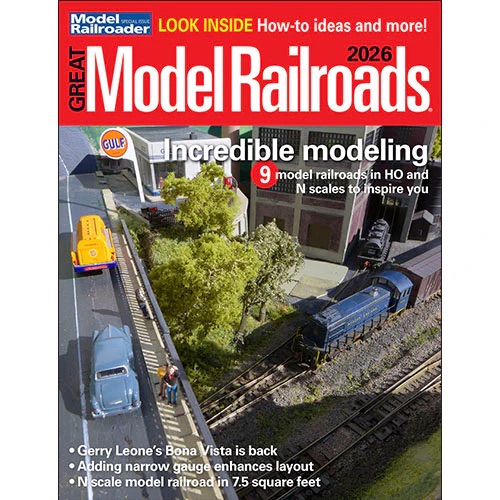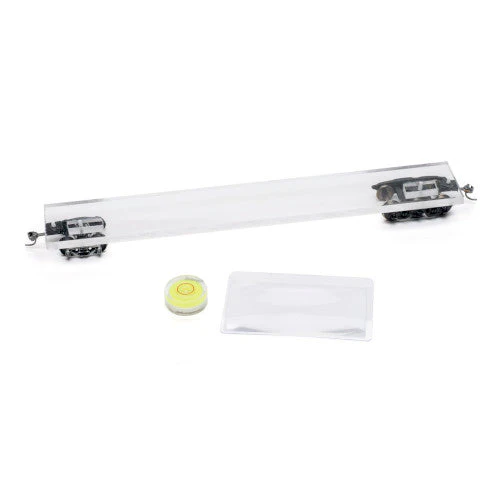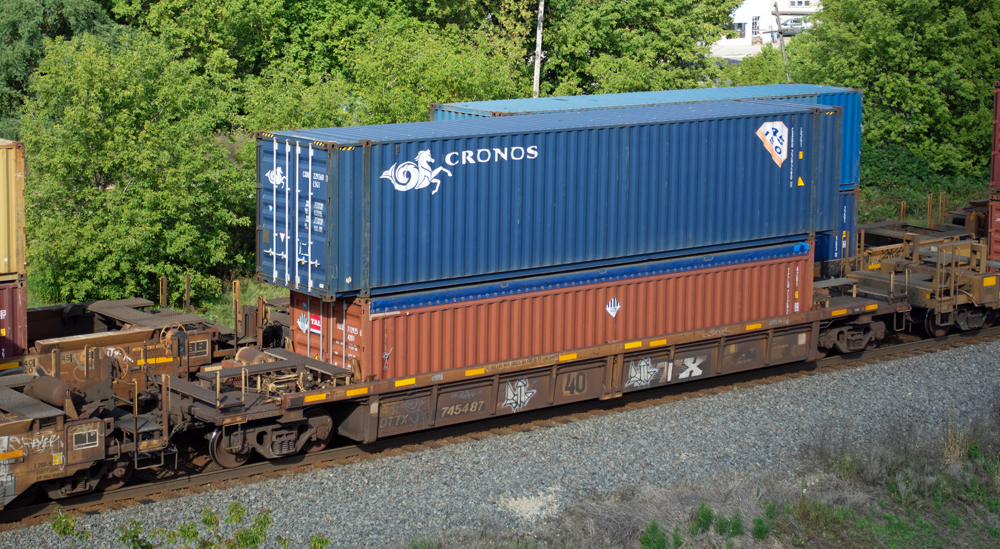
Q: I’ve noticed 53-foot intermodal containers on top of what I believe are 40-foot containers. What I’m not sure about is whether the smaller container is in a 40-foot well car or a 53-foot car? — David Bellamy
A: The 40-foot intermodal container in the bottom position can be in a 40- or 53-foot well car. A 40-foot car can accommodate two 20-foot containers or a single 40-foot container in the well. An example of the latter is shown above.
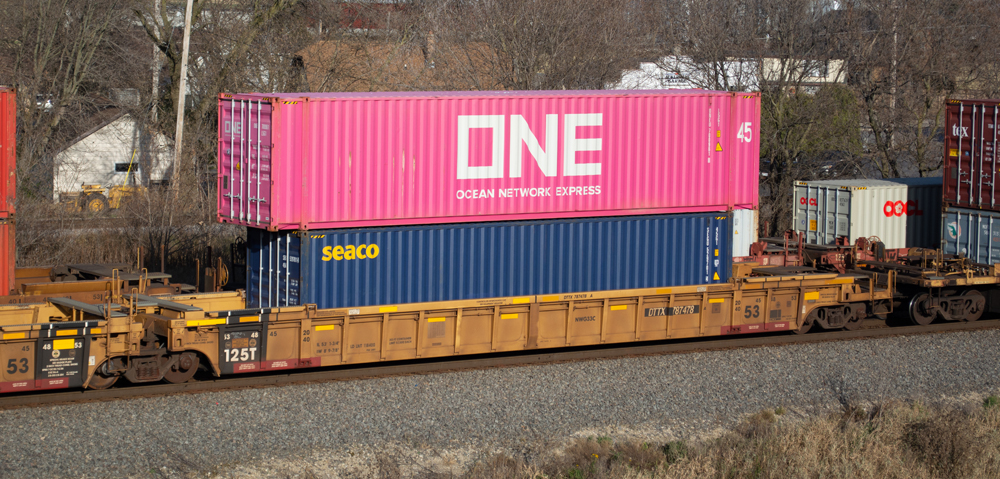
A 53-foot car can hold two 20-foot containers or a single 40-, 45-, 48-, or 53-foot container in the well. If you look on the side of some well cars, including DTTX 787478 (above), you will find the various container lengths indicated.
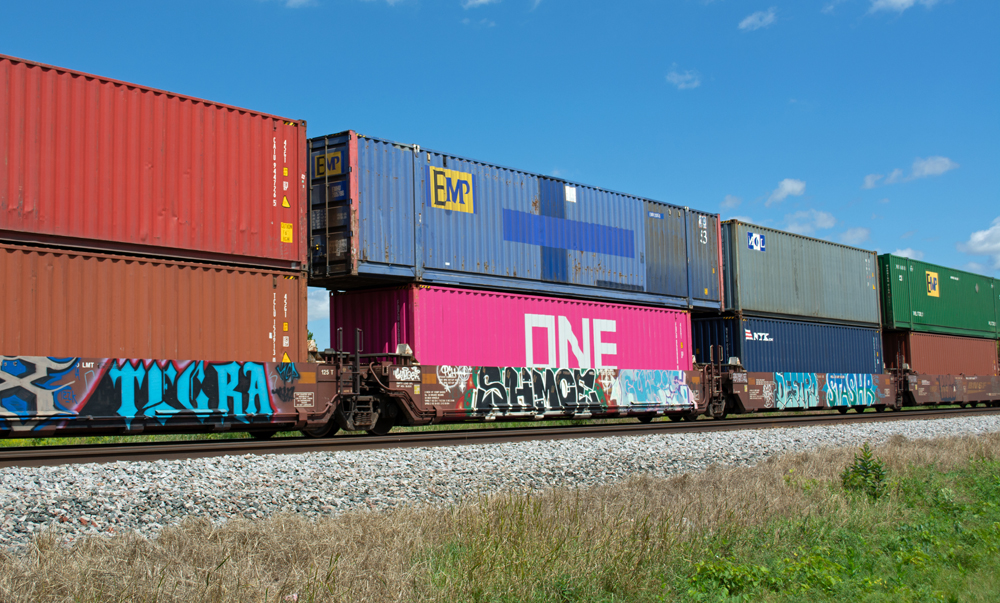
One consideration that has to be made when putting a 53-foot container in the top position, especially in 40-foot articulated well cars, is the overhang. I’ve seen this handled a couple of ways. As shown in the image above, the containers on top are in an alternating 40- and 53-foot pattern. Another solution, illustrated below, is to have a 53-foot container on top in one unit and a single container in adjacent, drawbar-connected units.
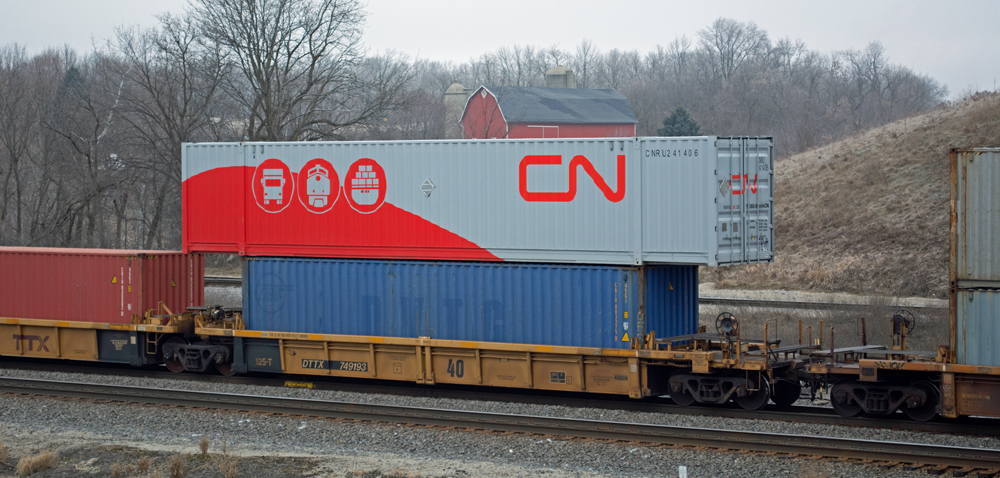
On 40-foot, three-unit articulated well cars, 53-foot containers are usually put in the top position in the A and B (end) units. On 40-foot, five-unit articulated cars, the longer containers are normally on top in the A, B, and D (middle) units. Why? Because the coupler end of the A and B units have non-articulated trucks and additional space for platforms, handbrakes, and brake appliances.
Check out Jeff Wilson’s book Piggyback & Container Traffic for more information on this topic.
Send us your questions
Have a question about full-size trains, model trains, or toy trains? Send it to AskTrains@Trains.com.






